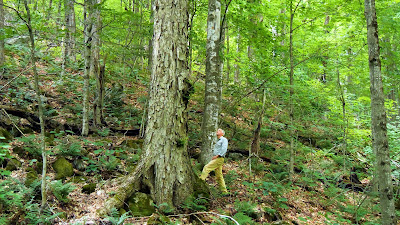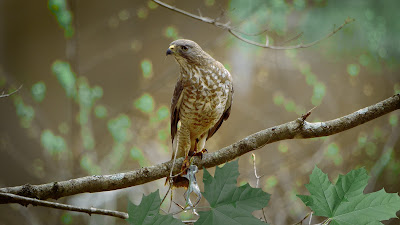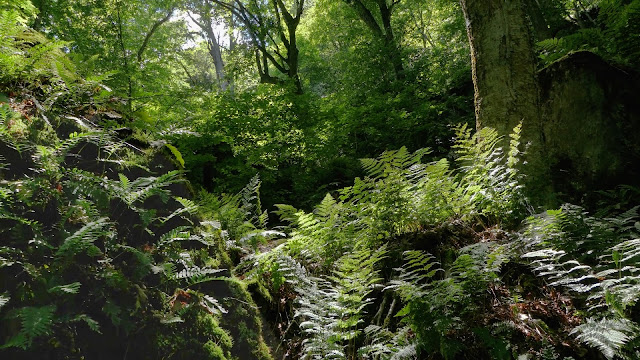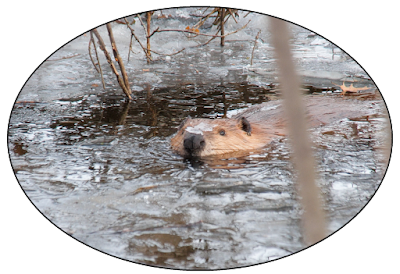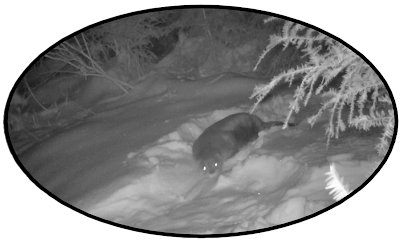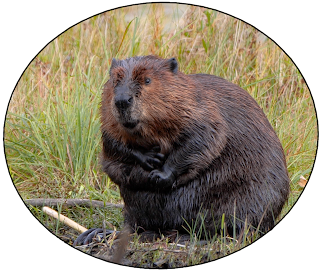 |
| Eastern White Oak |
Oak trees are found across the Northern Hemisphere, in Europe, Asia, Africa, and the Americas. There are hundreds of species in the oak genus Quercus (about 450 to 600, depending on which source you consult). About 90 of those occur in the United States, and 12 are native to New England. There are also a few other oak species planted in New England that don't naturally occur here.
For many years, I've had an uneasy time identifying some of the oak species in New England; I could readily place them in one of the two oak groups (the white oak group, or the red oak group), but nailing down the species was a test that often left me frustrated. I found that many people have the same difficulty, even forestry professionals who spend a lot of time in the company of trees.
Why is that? It's because there is a lot of both similarity and variability in the visible characteristics of oak trees- particularly bark and leaves, which are what most people rely on to identify trees. A given species (or individual tree) can have leaves that look significantly different depending on whether they're in the sun or shade, are juvenile or mature. And the features of one species can often be quite similar to those of another.
There is a natural variability of characteristics from tree to tree of the same species. But with oaks, there is also a significant degree of hybridization that can occur wherever they can receive wind-blown pollen from other species of the same (white or red) group. Quite often when trying to identify which species an oak belongs to, we find ourselves confused... "the leaves look like a northern red oak, but the bark isn't quite right, and the acorns don't look right either".
A couple years ago, I decided to gather footage for a film about New England's native oaks, to not only help others identify them, but to discipline myself to study and learn them as well. A retired biologist friend, Al Richmond, was just as eager as I was to become more proficient at putting oaks in their proper pigeon hole, so we spent many a day seeking out each of the twelve New England species, plus a hybrid or two. It was often frustrating, but it was an adventure we both enjoyed. A few of the species are uncommon in this far northeast corner of America, which heightened the challenge.
The film is now completed; it evolved into more than just a "how to identify oaks" project, so other oak-related topics are covered too. For example, many are aware of the havoc that gypsy moths (now known as spongy moths) can wreak upon a forest; but do you know the relationship those moths have with mice and acorns, and why a forest mix of white and red oaks is important? Wildlife biologist Jeff Boettner does a great job explaining that.
 |
| Gypsy (aka Spongy) moths laying eggs |
In the hierarchy of ecologically important tree species, oaks are at the top. Their acorns are of course a major food source for numerous species (eg, squirrels, deer, turkeys, bears, porcupines, etc, etc). But they contribute in less obvious ways that are equally important. For one, their leaves are munched by far more insect species than any other type of native tree. Those masses of insects, typically out of our sight and unnoticed in the canopy, are the major draw for most of our nesting warblers and other songbirds who migrate here from southern climes to raise their young on the bountiful protein "bugs" provide. The spring and early summer bird life we so enjoy in our forests and yards would be greatly diminished were it not for oaks.
 |
| Gnarly old white oak |
The gnarly old white oak in the photo has something in common with the Wright Brothers first airplane flight... can you guess what it might be? I'll bet not.
Here's something that probably hasn't come up in conversation at the dinner table: when the last glaciers receded northward some twelve to fifteen thousand years ago, forests began to recolonize barren, previously-glaciated regions. Oaks showed up surprisingly quickly, considering their heavy seeds (acorns) aren't carried aloft on the balmy breezes. It has been calculated that, based on the typical distance from the tree that acorns either land or are cached by animals, the oaks should still not be as far north as they are for many hundreds of thousands of years. So how did they get where they are in just a few thousand?
What are oak galls all about?
 |
| Cotton candy? No- wool sower gall |
And why do so many of the acorns you pick up have a tiny round hole in them?
 |
| Why is that little hole there? |
These questions are addressed in the film.
There are more seldom-seen topics covered, but let's keep those a surprise until you watch it.
And you can do that, starting at 2pm EST on New Years Day (1/1/2023).
Watch New England's Native Oak Trees on our New England Forests Youtube channel then. Enjoy!


















